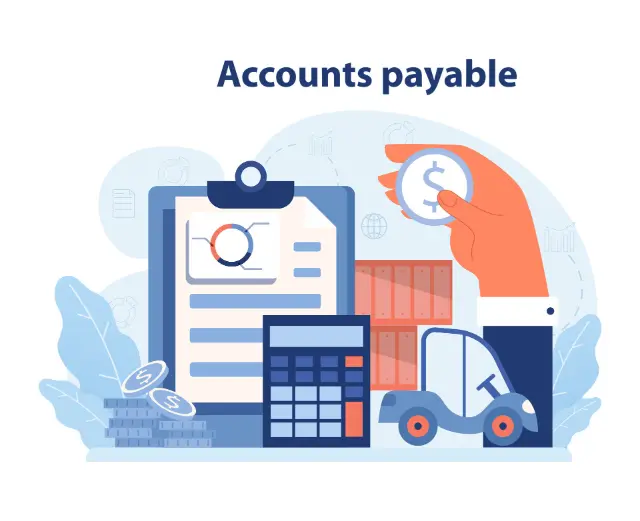Returns Processing Automation: A Game-Changer for the Manufacturing Industry
Returns processing can be a major headache for manufacturers. Not only is it time-consuming and error-prone, but it can also lead to lost sales and unhappy customers. That’s why automating returns processing is essential for any manufacturer that wants to stay competitive.
Challenges of Returns Processing
There are a number of challenges associated with returns processing, including:
- Manual processes: Returns processing is often a manual process, which means that it is time-consuming and error-prone.
- Lack of visibility: Manufacturers often have limited visibility into the returns process, which can make it difficult to track the status of returns and identify areas for improvement.
- Inefficient communication: Communication between manufacturers and customers can be inefficient, which can lead to delays and misunderstandings.
Benefits of Returns Processing Automation
Automating returns processing can help manufacturers overcome these challenges and improve efficiency, accuracy, and customer satisfaction. Benefits of returns processing automation include:
- Reduced costs: Automation can help manufacturers reduce the cost of returns processing by eliminating manual processes and reducing errors.
- Improved accuracy: Automation can help manufacturers improve the accuracy of returns processing by eliminating human error.
- Increased efficiency: Automation can help manufacturers increase the efficiency of returns processing by streamlining the process and reducing the time it takes to process returns.
- Improved customer satisfaction: Automation can help manufacturers improve customer satisfaction by providing customers with a more efficient and accurate returns process.
How to Automate Returns Processing
There are a number of ways to automate returns processing, including:
- Using Python: Python is a powerful programming language that can be used to automate a wide variety of tasks, including returns processing.
- Using AI: AI can be used to automate tasks such as product inspection and fraud detection.
- Using cloud-based solutions: Cloud-based solutions can provide manufacturers with a scalable and cost-effective way to automate returns processing.
Conclusion
Returns processing automation is essential for any manufacturer that wants to stay competitive. By automating returns processing, manufacturers can reduce costs, improve accuracy, increase efficiency, and improve customer satisfaction.

Python, AI, and the Cloud: A Powerful Trio for Returns Processing Automation
Python for Returns Processing Automation
Python is a powerful programming language that is ideally suited for returns processing automation. Python’s extensive libraries and ease of use make it possible to develop sophisticated automations that can handle a wide variety of tasks, including:
- Unattended bots: Unattended bots are software programs that can run autonomously, without human intervention. They can be used to automate repetitive tasks, such as processing returns. Python is a popular choice for developing unattended bots because it is efficient, reliable, and easy to use.
- Attended bots: Attended bots are software programs that require human interaction to complete tasks. They can be used to automate tasks that require human judgment or decision-making. Python is a good choice for developing attended bots because it is easy to integrate with other software applications and can be customized to meet the specific needs of a business.
AI for Returns Processing Automation
AI can be used to improve the accuracy and efficiency of returns processing automation. For example, AI can be used to:
- Identify and classify returned products: AI can be used to identify and classify returned products, even if they are damaged or incomplete. This can help to ensure that products are processed correctly and that the correct amount of refund is issued.
- Detect and prevent fraud: AI can be used to detect and prevent fraud, such as returns of counterfeit or stolen products. This can help to protect manufacturers from financial losses.
- Handle edge cases: AI can be used to handle edge cases, such as returns of products that are no longer in production. This can help to ensure that all returns are processed smoothly and efficiently.
Cloud Platforms for Returns Processing Automation
Cloud platforms offer a number of benefits for returns processing automation, including:
- Scalability: Cloud platforms can be scaled up or down to meet the needs of a business. This means that businesses can start small and scale up as their automation needs grow.
- Reliability: Cloud platforms are highly reliable and offer a guaranteed uptime. This means that businesses can be confident that their automation will always be available.
- Security: Cloud platforms offer a high level of security, which is important for protecting sensitive data.
Conclusion
Python, AI, and the cloud are a powerful trio for returns processing automation. By using these technologies, manufacturers can improve the accuracy, efficiency, and scalability of their returns processing operations.

Building the Returns Processing Automation
The returns processing automation process can be divided into the following sub-processes:
- Return authorization: The customer requests a return authorization from the manufacturer.
- Product inspection: The manufacturer inspects the returned product to verify its condition.
- Refund issuance: The manufacturer issues a refund to the customer.
Each of these sub-processes can be automated using Python and the cloud.
Automating Return Authorization
To automate return authorization, we can use a Python script to:
- Monitor the company’s email inbox for new return requests.
- Parse the email to extract the customer’s information and the reason for the return.
- Create a return authorization record in the company’s database.
- Send an email to the customer with the return authorization details.
Automating Product Inspection
To automate product inspection, we can use a Python script to:
- Monitor the company’s receiving dock for new returns.
- Scan the barcode on each returned product to identify it.
- Compare the product’s condition to the information in the return authorization record.
- Update the return authorization record with the product’s condition.
Automating Refund Issuance
To automate refund issuance, we can use a Python script to:
- Monitor the company’s database for return authorization records that have been approved for refund.
- Create a refund record in the company’s database.
- Send a refund to the customer via the customer’s preferred payment method.
Data Security and Compliance
Data security and compliance are important considerations for any automation project. When automating returns processing, it is important to ensure that customer data is protected and that the automation process complies with all applicable laws and regulations.
Python vs. No-Code RPA/Workflow Tools
Python is a more powerful and flexible language than no-code RPA/workflow tools. This means that Python automations can be more customized and can handle a wider range of tasks. However, Python automations can also be more complex to develop and maintain.
No-code RPA/workflow tools are easier to use than Python, but they are also less powerful and flexible. This means that no-code RPA/workflow automations may not be able to handle all of the tasks that a Python automation can handle.
Why Algorythum Takes a Different Approach
Algorythum takes a different approach to returns processing automation because we believe that Python is the best language for developing custom, scalable, and reliable automations. We have seen firsthand the limitations of off-the-shelf automation platforms, and we believe that Python is a better choice for businesses that want to automate their returns processing operations.
Here are some of the advantages of using Python for returns processing automation:
- Python is a powerful and flexible language. This means that Python automations can be customized to meet the specific needs of a business.
- Python is a scalable language. This means that Python automations can be scaled up or down to meet the needs of a business.
- Python is a reliable language. This means that Python automations are less likely to fail than automations developed with other languages.
If you are looking for a reliable and scalable solution for returns processing automation, we encourage you to consider using Python. Algorythum can help you develop a custom Python automation that meets the specific needs of your business.

The Future of Returns Processing Automation
The future of returns processing automation is bright. As technology continues to develop, we can expect to see even more powerful and sophisticated automations that can handle a wider range of tasks.
One area of future development is the use of artificial intelligence (AI) to improve the accuracy and efficiency of returns processing automation. For example, AI can be used to:
- Identify and classify returned products: AI can be used to identify and classify returned products, even if they are damaged or incomplete. This can help to ensure that products are processed correctly and that the correct amount of refund is issued.
- Detect and prevent fraud: AI can be used to detect and prevent fraud, such as returns of counterfeit or stolen products. This can help to protect manufacturers from financial losses.
- Handle edge cases: AI can be used to handle edge cases, such as returns of products that are no longer in production. This can help to ensure that all returns are processed smoothly and efficiently.
Another area of future development is the use of blockchain technology to improve the security and transparency of returns processing automation. Blockchain technology can be used to create a tamper-proof record of all returns processing transactions. This can help to prevent fraud and ensure that all parties involved in the returns process are held accountable.
If you are looking for a way to improve the efficiency and accuracy of your returns processing operations, we encourage you to consider using Python and the cloud. Algorythum can help you develop a custom Python automation that meets the specific needs of your business.
Subscribe to our newsletter to stay up-to-date on the latest developments in returns processing automation.
Contact us today to get a free feasibility and cost-estimate for your custom returns processing automation.

Algorythum – Your Partner in Automations and Beyond
At Algorythum, we specialize in crafting custom RPA solutions with Python, specifically tailored to your industry. We break free from the limitations of off-the-shelf tools, offering:
- A team of Automation & DevSecOps Experts: Deeply experienced in building scalable and efficient automation solutions for various businesses in all industries.
- Reduced Automation Maintenance Costs: Our code is clear, maintainable, and minimizes future upkeep expenses (up to 90% reduction compared to platforms).
- Future-Proof Solutions: You own the code, ensuring flexibility and adaptability as your processes and regulations evolve.









